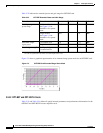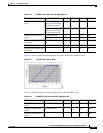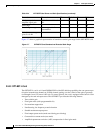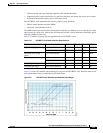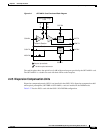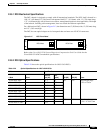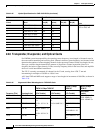
2-36
Cisco ONS 15454 DWDM Engineering and Planning Guide, Release 7.x
July 2006
Chapter 2 Cards Specifications
2.2.4 Optical Amplifiers
Figure 2-9 shows the internal functional structure for the OPT-BST-L card.
Figure 2-9 OPT-BST-L Card Functional Block Diagram
Optical loss (in dB) caused by the OPT-BST-L monitor ports is printed on the card faceplate. The
OPT-BST-L is a single-slot bidirectional card with three LEDs and eight LC-PC-II optical connectors on
the card faceplate.
2.2.4.4 OPT-AMP-L Card
The OPT-AMP-L preamplifier card can operate up to 64 optical transmission channels with 50-GHz
channel spacing over the L-band optical spectrum (wavelengths from 1570 nm to 1605 nm). The
OPT-AMP-L is an L-band DWDM optical amplifier module consisting of atwo-stage EDFA with aMAL
section for allocation of DCU and with the capability to add/drop the OSC. The OPT-AMP-L
preamplifier is software configurable as a preamplifier or as a booster amplifier.
To control gain tilt, the card is equipped with a built-in VOA managed by the card’s microprocessor. The
VOA can also be used to pad the DCU to a reference value.
The OPT-AMP-L card provides the following features:
• True variable gain
• Fast transient suppression
• Nondistorting low frequency transfer function
• Settable maximum output power
• Fixed Output Power mode (mode used during provisioning)
• Constant drive current mode (test mode)
• MAL support for a fiber-based DCU
• ASE compensation in Fixed Gain mode
• Full monitoring and alarm handling capability with settable thresholds
• Supported optical safety functionality by means of signal loss detection and alarm, fast power down
control and reduced maximum output power in safe power mode
134976
MON TX OSC RX
MON RX OSC TX
OSC
COM RX
P1 P2
P4 P5
COM TX
LINE TX
APR
signal
LINE RX
in RX
P
Physical photodiode
P3







